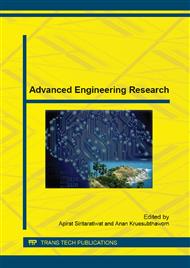p.374
p.379
p.384
p.388
p.393
p.397
p.402
p.406
p.410
A Coordinated Voltage Control Scheme for Distribution Network with Renewable Sources
Abstract:
With significant penetration of renewable energy sources in distribution networks, the voltage control method may have to be revised especially during the light load condition. This paper presents a coordinated voltage control strategy to address this issue. A mixed-integer nonlinear optimal power flow was formulated and solved by Particle Swarm Optimization (PSO). All system constraints and operating limits are considered. The code was written using DigSILENT programming language (DPL) and implemented inside DigSILENT power factory simulation software. The proposed method can minimize generation curtailment to prevent overvoltage at any buses. A realistic distribution network was adopted to demonstrate the systems’ effectiveness. Simulation results show that all security constraints are maintained within operating limit. Power losses at the same time are minimized in comparison to the losses using the classical control method.
Info:
Periodical:
Pages:
393-396
Citation:
Online since:
August 2015
Authors:
Price:
Сopyright:
© 2015 Trans Tech Publications Ltd. All Rights Reserved
Share:
Citation:


